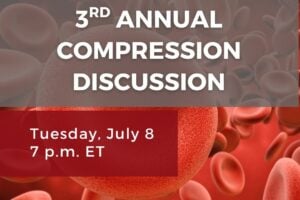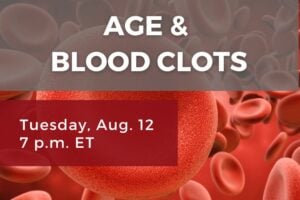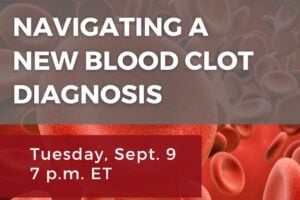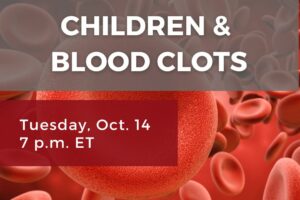We have all been taught that blood clotting proteins and blood platelets do one thing– clot our blood to protect us from bleeding. Deficient production or production of defective clotting proteins or platelets results in bleeding disorders. Increased production, increased activity or reduced clearance (elimination) of activated clotting proteins or platelets can result in blood clots or thrombosis. Over the past several decades, we have gained a greater appreciation that proteins in biology tend to have more than one function – allowing for economies of scale and important redundancies. It is not surprising, therefore, to learn that clotting proteins and platelets can be important players in immune defense mechanisms in infection, tissue repair after wounds or burns, inflammation and the growth and metastasis (spread) of cancer – particularly in the process of development of new blood vessels, which is called “angiogenesis”. We have learned several things that indicate a special relationship between cancer and blood clotting, including the following:
- Patients who develop cancer and a blood clot at the same time do not live as long as patients with cancer who do not have a blood clot;
- Patients who develop venous blood clots (deep vein thrombosis and/or pulmonary embolism) for no apparent reason (so-called “idiopathic” venous thrombosis) are at greater risk for having an underlying cancer (an occult malignancy);
- Many of the genetic mutations that stimulate the development of human cancers (“oncogenes”) also regulate blood clotting proteins (particularly a protein called tissue factor);
- Clotting proteins like tissue factor, factor VII and thrombin can stimulate a cancer cell to make more factors (hormone-like substances called growth factors) which favor the growth of cancer and new blood vessels (angiogenesis) and help cancer to metastasize (spread);
- Cancer cells tend to make large amounts of clotting proteins, which they display on their outer surface and spit them out or shed them into the blood stream in the form of small bubble-like structures called “microparticles”;
- Patients with cancer who have more of these microparticles in their blood appear to have an increased risk for blood clots and do not live as long;
- In experimental tumors in mice, preventing the excessive production of clotting proteins (e.g. tissue factor) and microparticles by cancer cells can reduce the development of new blood vessels and shrink the cancers.
Early studies in patients with cancer suggest that some do better (get fewer blood clots and possibly live longer)
when treated with anticoagulant drugs; identifying patients at high risk for these problems is a priority so that anticoagulants might be used most effectively just in those patients who need the drugs to prevent excessive clots and reduce the growth of cancer.
Beyond cancer, clotting proteins may have other functions in infections and inflammation that deserve our attention.
For example, studies of the “living fossil” the horseshoe crab, which is more than 4 million years old, have revealed that these animals use clotting proteins to defend themselves against infections with bugs that live in the sea water that surrounds them. This ancient defense mechanism in horseshoe crabs, called innate immunity, is intimately linked to their blood clotting mechanism. Only recently have we come to understand that innate immunity in humans may also be linked to blood clotting and platelet function; several examples include the following:
- Coagulation Factor X may be important in dealing with certain virus infections, including the adenovirus, which causes infections in people but is also being used for gene therapy. We clearly need to understand more about how the body responds to virus infections so we can use these viruses safely to carry new genes into cells and cure diseases like the bleeding disorder, hemophilia.
- Platelets eat and kill malaria parasites. Scientists are now studying how it might be possible to use a platelet protein called platelet factor 4 (PF4) to treat malaria. We used to think that PF4 was only important for getting rid of the anticoagulant heparin from the body after it was no longer needed to prevent or treat blood clots. Now we know that PF4 targets, attacks and destroys the malaria parasite only in infected red blood cells and does not destroy the infected cell or normal red blood cells. Therefore, it may be possible to treat malaria without causing anemia. Indeed, investigators at the University of Pennsylvania are studying the possibility that humans could be treated with synthetic mimics of PF4, which were found to be very effective and rapid acting in a mouse model of malaria.
In summary, blood clotting and platelet proteins do more than clot blood and prevent bleeding. These examples of other functions in cancer and infections are just a few of the potential uses of these very ancient proteins that we may be able to utilize to treat other diseases. Stay tuned for more developments in this exciting area of research.
Medical Message from Dr. Rickles






